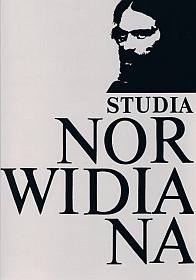The Biblical figure in Cyprian Norwid’s work (transl. by Tadeusz Karłowicz)
Abstract
The Biblical figure in Norwid's work is a poetic tool that serves presentation of his Christian philosophy of history that in its basic features does not differ from the Biblical Christocentric theology of history according to the pattern: Adam – Christ – New Adam.
Norwid broadened this vision of history with a cultural-civilization aspect. First of all he connected the Biblical figurativeness with Platonic exemplarism (in Quidam), and also he broadened the concept of figure by the phenomenon of cultural patterns consolidated by tradition and created by the achievements of outstanding historical figures, such as Socrates, Epimenides, Codrus, Cicero, the legendary Wanda and Krakus, Byron, Mickiewicz, Eng. Jan Gajewski, Emir Abd el Kader. In Norwid's works a vision appears of the development of history as the constant building and perfecting of culture that is enlivened by ever more perfect models, in order to finally become ready for the neo-Platonic The Truth of the Prototype that is Christ. Norwid understood the Biblical figure as a literary image of a significant historical gesture establishing the model for future actions and events, and for this reason being revived in ever more perfect realizations. The figure in Norwid's work has a rather cultural character than a strictly religious one. Sometimes it loses its Biblical context (the case of Codrus), for history for Norwid is more history of culture than that of politics, and Christianity is always a whole cultural formation, and not just a religion. Hence the figure very frequently is used by Norwid to show Christian imperatives that create culture (the example of Jan Gajewski).
Copyright (c) 2011 Studia Norwidiana

This work is licensed under a Creative Commons Attribution-NonCommercial-NoDerivatives 4.0 International License.





